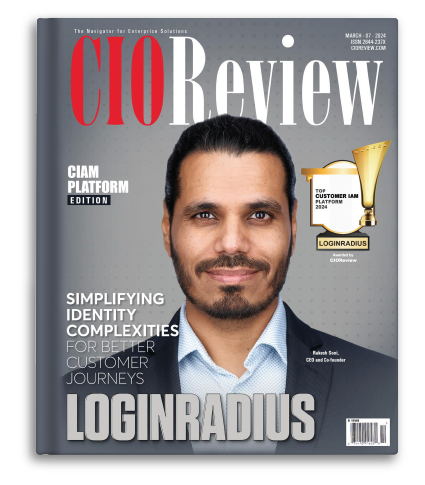The more leads that are generated, the better the business growth would be. And that's why a lot is riding on a company's lead generation strategy and how effective it is to ensure ROI.
In this article, we take a closer look at what exactly B2B lead generation is, the differences between B2B and B2C lead generation, the various steps in the lead generation process, the channels to take to increase sales, B2B lead generation strategies and B2B lead generation tips for 2021.
What is Business-to-Business Lead Generation
Lead generation can be defined as the process in which an unknown but potential consumer is turned into a qualified lead. These leads provide their contact information such as name, email address, phone number, etc., through various means which can be used to further conversation and convert it to sales.
In the B2B space, the leads are decision-makers from other organizations and businesses that may need your company's product or service to further their own growth. All that is left to convert these qualified leads into consumers is an effective sales pitch.
The usual process of lead generation involves nurturing leads via marketing automation. Once B2B marketers identify a lead as a potential prospect for a company's products, it can be moved into the sales pipeline for lead conversion.
Generating B2B leads is essential and forms the backbone of all good B2B marketing strategies. Furthermore, establishing a strong sales pipeline will ensure that companies maintain a steady growth rate.
It is important to remember that potential leads are only just one step away from becoming your clients. All you need is to gain their attention, provide value for your offerings and prove that your products and services will be valuable additions to their services.
Difference Between B2C and B2B Lead Generation
Whether it is B2C or B2B lead generation, anyone interested in what you have to offer becomes part of the target audience. However, there are a few differences between B2B and B2C lead generation, especially in terms of the approach and buying process that you'll have to take into consideration to craft an effective strategy. Here are a few key differences between the two.
Different objectives
While B2B lead generation strategies focus on building long-term relationships, B2C is all about attracting people ready to make purchasing decisions. B2B lead generation aims to lay a foundation for prospects and stay on their mind so that when the prospects are ready to make a purchase, they're most likely to think of their brand.
Purchasing power
The buying decision in B2C usually lies with one individual instead of B2B, where more than one person most likely decides. B2B marketers will have to cater to more than one individual in an organization to convert a lead into sales.
Target audience
B2C lead generation caters to a wide range of people and a broader audience than B2B, where the target audience is usually the people at the top of the management level who make purchasing decisions for their businesses.
Content requirement
B2B buyers usually do their research and consider multiple vendors to find the optimal solution for their businesses. B2B marketers will have to equip themselves with valuable content like industry reports, case studies, and whitepapers to win the trust and gain their audiences' confidence. B2C, on the other hand, is free to promote free resources and create personalized offers to convert their potential leads.
Despite these key differences, B2C and B2B lead generation strategies focus on the common goal of generating and converting more leads for business development and improving consumer sourcing. However, it is important to consider these differences when building effective B2B lead generation strategies for 2021 for your business.
Now we move on to the essential elements you most definitely need to build successful B2B lead generation strategies for your business.
An Effective B2B Lead Generation Strategy Must Include the Following Elements
Step 1: Identifying B2B Prospects
The first and most basic step towards generating quality B2B leads is gathering prospective consumers' contact details. This consumer information can be in the form of an email list or a list of phone numbers and is often sourced in-house, either generated by a lead gen company, usually a third party, or purchased from a lead database. Purchase of potential leads from a database is not advisable for B2B lead generation.
Step 2: Contacting Potential Leads
Once you have a list of contact numbers or email IDs, the next obvious step is reaching out to these consumers. They can be contacted on social media, cold outreach, or by responding to inquiries from website visitors. Employ creative and engaging text and speech to attract quality consumers and convert them to sales.
Step 3: Qualifying and Prospecting High-quality Leads
Marketing reps can evaluate leads while interacting with them and gauge how likely they are to buy. This can be achieved by assessing the level at which leads are in the buying process. The first level is research and awareness, where prospects discover a problem and consume blogs, case studies, and whitepapers to search for a solution.
The second level considers where the leader knows what they need and will now specify the same to sales vendors. The third and last level is decision-making. Prospective buyers will filter through vendors to choose one that can best meet their needs and converse with other decision-makers to complete the purchase.
Depending upon the level a lead is at, B2B companies can launch nurturing campaigns or coax prospects into booking a demo or a call for an opportunity to showcase their product or service.
Step 4: Bringing Leads to a Close
After multiple meetings and discussions with all the stakeholders and a successful sales pitch, a prospect chooses you over others, and the deal is done. After a lead is successfully converted into a sale, they would be transferred to consumer services for onboarding and other processes.
Effective Channels for B2B Lead Generation (Online and Offline)
In order to come up with relevant B2B strategies for your organization, it’s essential to know the various channels from where leads can be generated. In B2B, the credibility of a brand and the teams behind it play a crucial role, which is why online sources alone cannot be entirely relied upon. Let’s now look at some of the most common and effective channels for B2B lead generation.
- Email marketing: One of the most popular and common forms of marketing and lead generation is email marketing. Once you obtain an email list, create innovative copy and design to attract potential consumers and keep at it so that potential leads also get to know you better.
- Live events: Once a very popular method to attract people's attention, live events currently may not be viable. But virtual events are proving themselves to be equally popular as they allow people to attend events from the comfort of their homes. Offer unique content to pull viewers in.
- Content marketing: Content strategy is one of the best and most relevant strategies against the background of the Covid 19 pandemic. Case studies, whitepapers, and a blog post with engaging content are sure to score with your target audience.
- SEO: B2B companies are better served in investing in SEO to divert traffic from search engines.
- PPC: Pay-per-click advertising with catchy content and SEO with keywords is proving to be a worthy investment for lead generation.
- Social media: It can be safely said that social media is where everything’s at these days. Several platforms can be potential lead generators with the right kind of strategic tactics.
- Print media: Don’t knock it before at least trying it! There is still a segment of potential leads that get their information from newspapers and magazines and other print media forms. Based on your target audience, investing in print for leads might work, depending on your product or service.
12 B2B Lead Generation Strategies for 2021
1. Content Marketing Strategies
The B2B lead generation process is essentially exchanging information from your company and your website visitors. And we've already established the importance of creating innovative and engaging content to lure prospects in from the moment they enter the landing page.
"Lead Magnets", as they're called, are helpful resources ranging from webinars, case studies, and research reports to How-to guides that you can offer to your prospective leads in exchange for their contact information.
Your content strategy must feature a high-quality copy to optimize SEO so that more potential leads will arrive at your website through search engines.
2. Social Media Strategies
Social media allows a more targeted approach and thereby lets you refine the lead generation process. Professional platforms like LinkedIn proved that they could provide brands and businesses a space to engage with potential leads.
Social media advertising is also very effective as more and more people join and signup to new social login via these platforms every day, increasing your audience. Social media also makes targeted advertising possible as you can set up various factors like age, gender, location, and interests.
Once again, your content's quality can greatly influence lead generation as audiences are more likely to be interested in engaging content than in plain sales messages.
3. Paid Ads
PPC (Pay-per-click) or paid advertisements have their advantages, especially once you determine your target audience. While PPC is one of the easiest and best ways to achieve results quickly, it can also prove quite expensive. Not to mention that any ad block extension could altogether block your ads.
There are various ways to post ads online to generate leads. The most frequently used and popular online advertising platform is Google Adwords, which lets you post advertisements across the Google network. You can choose from Search Network, Display Network and Remarketing to find the right option for you.
4. Increase the Number of Social Media Shares
Viral marketing tactics often employ social sharing to generate more leads. B2B companies can provide affiliate programs through extra offers and bonuses to get users to share their content.
Using this lead generation tactic, you can become a trusted influencer and easily get more people to share your posts. When consumers share offers within their circles, word-of-mouth referrals will increase without extra expenditure on ads from your end.
5. Retarget Your Website Visitors
Many visitors to your site often leave without disclosing their email addresses. Retarget these visitors on other channels on social media and send them relevant offers to entice them back to your site for conversion.
You can also employ Google Ads to retarget your website visitors through display ads. Remarketing campaigns allow you to create several touchpoints for prospective leads to keep them engaged until the time comes to take a desirable action on your website.
5. Making "Out of Stock" a Business Opportunity
When you run out of products, you're losing out on consumers. What if we told you there's a way to turn that into an opportunity! By adding a form below the "Out of Stock" notice, you give visitors the option to provide their email ID and notify them when the product is back in stock. This way, you save a sale and also get the email addresses of potential leads.
6. Build Your Email List Using the Godfather-Strategy
As dramatic as that may sound, as a B2B company, you must make an offer potential leads cannot refuse! Old, vague sales pitches don't work anymore. These days, there's more to be gained from personalization.
Specified content that meets the interests and needs of prospects works better than a well-positioned generic pitch. Focus on creating conversion-based copy that naturally piques the interest of your prospects.
7. Using Fear of Missing Out (FOMO) to Improve Conversions
Creating scarcity or FOMO is a popular tactic that can greatly increase your conversion rate. It taps into the human psyche of wanting to have that which cannot be had.
Use FOMO when you have limited offers, when a product is running out of stock, or when a product is purchased to attract more prospects. A word of caution, though, putting up a countdown on all your products might not give you the results you want as visitors can spot false offers. FOMO works best only when used sparingly or only when required.
8. Use Intent Pop-ups or Slide-in Opt-ins on Key Pages
Personalization is again the key here as personalized intent pop-ups work better than generic ones. However, it is vital to not block consumers from reading your content. Try using exit-intent pop-ups on your most important pages, or opt for a slide-in opt-in to reach your consumers without negatively impacting their experience on your site.
9. Getting a 50% Conversion Rate by Asking Questions
The latest fad in effective B2B lead generation strategies is the quiz! And since it is not yet a mainstream strategy, quizzes haven't yet lost their novelty. Survey forms are inexpensive to run, very flexible in terms of the questions you'd like to ask, and are more dependable due to the anonymity they provide.
Not to forget that your consumers like them! Create fun, engaging, and easy-to-use quizzes and surveys that can be both embedded in your website and sent out via email.
10. Obtain Reputable Backlinks
Backlinks are the referrals and clients that a trusted website sends back to your website. B2B companies must gain the trust of websites to build backlinks. This can be achieved by writing blogs for other companies, having them share your content, gaining a spot in their resources section, and writing high-quality content that makes people want to link to.
It is noteworthy to always research other websites before sharing your content on them, never purchasing backlinks, and never receiving backlinks from unknown sources.
11. Use Your Imagination When Sending Cold Emails
Cold emailing is one of the toughest things to do as you don't know any information about the company or person you're emailing. It is, therefore, vital to make a good first impression to stand out from the crowd.
Use your imagination, be funny, appropriate humor always scores! Incorporate GIFs or the latest memes to catch the attention of a prospect immediately.
Avoid marketing lingo and keep your message simple and straight, and get right to the point. Follow up with at least two more simple and straightforward emails to improve your chances of being seen.
Our tried and tested list of B2B lead generation tips has helped many generate some quality leads. Make sure you have quality content as well to transform leads into sales successfully.




